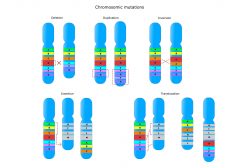Definition
noun, plural: galactosamines
A hexosamine, where galactose contains an amine (-NH2) instead of a hydroxyl (–OH) group, and occurs naturally, such as in certain glycoprotein hormones (e.g. luteinizing hormone and follicle-stimulating hormone)
Supplement
An amino sugar is a sugar molecule wherein the hydroxyl group is replaced by an amine group. Hexosamines are amino sugars wherein the sugar derivative is a hexose. Examples of hexosamines are glucosamine (based upon glucose), galactosamine (based upon galactose), fructosamine (based upon fructose), and mannosamine (based upon mannose).
Galactosamine is an amino sugar derived from galactose. It has a chemical formula of C6H13NO5.
In biological systems, galactosamine occurs as a component of certain glycoprotein hormones, e.g. follicle-stimulating hormone (FSH) and luteinizing hormone (LH). FSH is a glycoprotein polypeptide hormone released by gonadotropic cells of the anterior pituitary gland. Together with LH, it regulates processes of the reproductive system. The sugar component of the FSH bound to asparagine includes N-acetylgalactosamine, mannose, N-acetylglucosamine, galactose, and sialic acid. N-acetylgalactosamine (GalNAc) is an amino sugar derivative of galactose and is involved primarily in cell to cell communication. It occurs in the sensory nerve structures in animals, including humans. LH is another hormone released by gonadotropic cells, with a structure similar to FSH.
Galactosamine is used in research for its hepatotoxic effects. It is used to induce liver failure in animal models.
IUPAC name:
- 2-Amino-2-deoxy-D-galactose
Chemical formula:
Synonym(s):
- α-D-galactosamine
See also:







